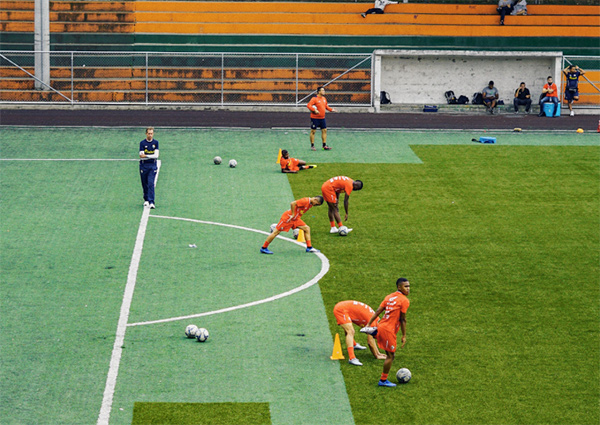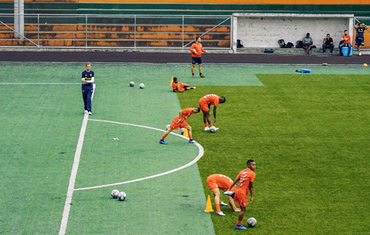
For millions of kids and parents across the U.S., the arrival of warm spring weather means one thing: It’s time to gear up for spring and summer sports. In the U.S., as many as 45 million kids participate in some sort of sport — and not just for the thrill of competition.
Studies show participation in sports can help kids do better in school and improve their social skills. Being physically active as a kid may decrease the risks of childhood obesity. And establishing a healthy interest in physical activity early in life means it’s more likely your child will stay active as an adult, too.
But as many benefits as childhood sports offer, it’s also true that when your child participates in sports, they increase their risks of sports-related injuries. As a parent, you want to do all you can to reduce those risks. Here’s a quick primer on some of the most common injuries in sports and what you (and your child) can do to help prevent them.
Common injuries in sports
Sports-related injuries can be roughly divided into two categories: acute injuries and overuse injuries.
Acute sports injuries
Acute injuries include things like fractures, sprains and strains, bruises and lacerations. Most acute injuries come from some sort of contact, like a fall or a collision with another player. Even contact with a ball or other equipment can cause an acute injury. In children, these injuries have the potential to affect their growth and development. For instance, if a fracture damages the growth plate – the part of the bone that’s still growing — it could cause effects that last for the rest of your child’s life.
Concussions are another type of acute injury that can have devastating consequences. Concussions cause chemical changes inside the brain, and they can also damage the brain tissue. Concussions and other types of traumatic brain injury are more likely to occur in contact sports, like football, wrestling, ice hockey, rugby, boxing and mixed martial arts. Even soccer, one of the most popular sports for kids, has significant concussion risks.
Overuse sports injuries
Overuse injuries develop when a joint or muscle is subjected to a lot of repetitive strain. Little league elbow andswimmer’s shoulder are two common types of overuse injuries in kids. Some knee injuries are also associated with repetitive use and strain. Like fractures, overuse injuries can affect a child’s growth and development, so they need prompt medical attention.
How to prevent common sports injuries
While parents might not be able to prevent every injury, there are things you can do to reduce your child’s injury risks:
Choose the right sport
Injury prevention begins long before your child gets to the playing field. It starts by choosing a sport that suits our child’s interests. If a child is interested in a sport and enjoys participating, they’re more likely to practice good habits, like warming up and wearing protective gear. On the other hand, kids who are disinterested might not pay attention while on the field, leaving them open to both acute and overuse injuries.
Evaluate the program
Plenty of youth sports are led by well-intentioned parents who often don’t have the skills needed to safely and effectively coach young kids. Before registering your child for a sport, find out all you can about the coaching staff. Ideally, you want a staff that’s invested in healthy play and good sportsmanship — not one that believes in winning at all costs.
Don’t specialize too early
Encourage your child to take part in multiple sports, especially when they’re younger. Specializing in one sport during elementary and middle school years is more likely to cause repetitive stress and overuse injuries. Playing in multiple sports engages different muscle groups and “balances out” musculoskeletal stress, improving coordination and overall performance.
Focus on the warm-up
Make sure your child warms up for at least 10 minutes before play or practice. A good warm-up routine prepares your child’s muscles, ligaments and tendons for activity, reducing the risk of sprains and other injuries.
Stay healthy off the field
Every athlete needs good nutrition, proper hydration and plenty of rest to be at their best. In kids whose bodies are growing, those needs are even greater. Help your child understand why healthy habits are important for them and how those habits can help them be better at their sport.
Investigate online resources
The internet is a good place for parents to learn more about injury prevention in young athletes. Here are three sites worth checking out:
Stop Sports Injuries, from the American Orthopaedic Society for Sports Medicine
American Academy of Orthopaedics: A Guide to Safety for Young Athletes
Help your athlete stay healthy
Sports injuries can be serious at any age. But in children and teens who are still growing, the short-and long-term effects of an injury can be especially concerning. If your child is injured or has any symptoms of injury, prompt medical evaluation is essential for their health. As a leading orthopedic specialist in Rockford, Dr. Van Thiel has extensive experience caring for athletes of all skill levels, including student athletes and professionals. To book an appointment for your child or to learn more about how Dr. Van Thiel can help your young athlete stay healthy, give us a call at or use our online contact form today.





